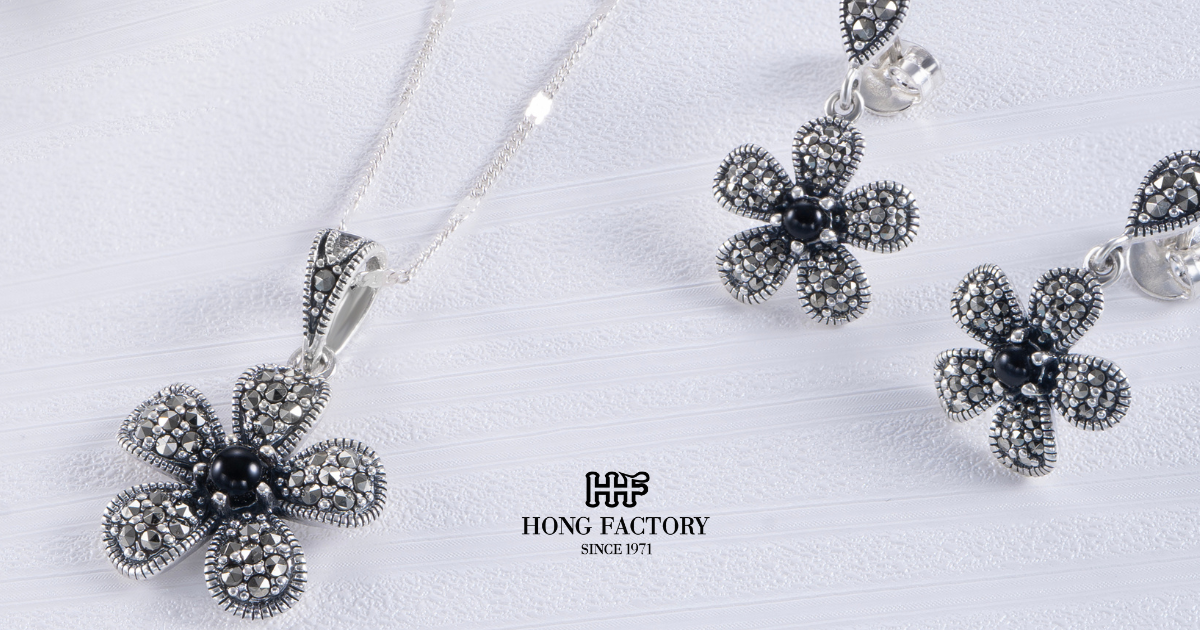Silver jewellery is admired for its shine, elegance, and timeless charm. But not all jewellery silver is the same—different types of silver offer different levels of purity, durability, and value. Understanding these variations can help buyers make smarter choices, find better-quality pieces, and choose jewellery that suits their lifestyle and preferences. This article explores the main types of jewellery silver used in today’s market, their characteristics, advantages, and how to choose the right one. 925
Understanding the Variations of Jewellery Silver

Silver used in jewellery is rarely 100% pure because pure silver is too soft for practical wear. To strengthen it, jewellers mix it with other metals—creating alloys that balance purity and durability.
Why silver alloys exist:
- Pure silver bends easily
- Alloys make jewellery stronger
- Enhanced resistance to scratches and tarnish
- Better shape retention for detailed designs
Now, let’s explore the most popular silver types found in modern jewellery.
Sterling Silver (925 Silver)
Sterling silver is the most common and trusted type used worldwide.
Composition:
- 92.5% pure silver
- 7.5% copper or other metals
Key features:
- Durable and long-lasting
- Recognised by the “925” hallmark
- Ideal for rings, necklaces, bracelets, and earrings
Why it’s popular:
- Affordable
- High-quality standard
- Suitable for everyday wear
Sterling silver is the industry’s gold standard for jewellery lovers.
Fine Silver (99.9% Pure Silver)
Fine silver is almost completely pure, containing 99.9% silver.
Characteristics:
- Very soft compared to sterling silver
- Brightest natural white shine
- Best for delicate, non-structural pieces
Ideal for:
- High-end pendants
- Artistic jewellery
- Collector’s pieces
However, it’s not recommended for rings or bracelets that endure heavy wear.
Argentium Silver
Argentium silver is a modern, upgraded version of sterling silver.
Unique features:
- Tarnish-resistant alloy
- Contains germanium for added strength
- More durable than traditional sterling silver
- Hypoallergenic
Benefits:
- Requires minimal cleaning
- Retains shine longer
Argentium is considered a premium silver option for modern jewellery.
Silver-Plated Jewellery
Silver-plated pieces contain a base metal coated with a thin layer of silver.
Characteristics:
- Most affordable type of silver jewellery
- Lightweight and stylish
- The silver coating can wear off over time
Best for:
- Fashion pieces
- Trend-based jewellery
- Occasional wear
Not ideal for long-term use or daily wear.
Silver-Filled Jewellery
Silver-filled jewellery contains a thicker silver layer than silver-plated.
Features:
- More durable than plating
- More affordable than sterling silver
- Maintains shine longer than plated versions
Usage:
- Good for mid-range fashion jewellery
- Suitable for earrings and pendants
Although not as premium as sterling silver, it offers good value.
Nickel Silver (German Silver)
Despite its name, nickel silver contains no real silver.
Composition typically includes:
- Nickel
- Copper
- Zinc
Characteristics:
- Silver-like appearance
- Extremely affordable
- Not recommended for sensitive skin
Best used for costume jewellery, not fine accessories.
Bali Silver (Handcrafted Silver)
Originating from Bali, Indonesia, Bali silver is known for its detailed craftsmanship.
Features:
- Usually 925 sterling silver
- Handcrafted designs with traditional patterns
- Artistic and unique
Ideal for those who appreciate culturally inspired jewellery.
Thai Silver (Hill Tribe Silver)
Thai silver is typically purer than sterling silver.
Characteristics:
- Often 97–99% pure silver
- Soft but stunning in appearance
- Handmade by hill tribes
Great for collectors and lovers of artisanal jewellery.
Oxidised Silver
Oxidised silver has a dark, antique finish created through a chemical process.
Features:
- Vintage aesthetic
- Popular in boho and gothic styles
- Enhances texture and detail
A favourite for unique, dramatic jewellery designs.
Rhodium-Coated Silver
Some silver jewellery is coated with rhodium—a rare, precious metal.
Benefits:
- Adds shine
- Prevents tarnish
- Increases durability
Often used in high-end jewellery for a premium finish.
How to Choose the Right Type of Jewellery Silver
Choosing the right silver depends on lifestyle, budget, and personal preference.
Choose sterling silver if:
- You want long-lasting pieces
- You wear jewellery daily
Choose fine silver if:
- You prefer collector-level jewellery
- You appreciate high purity
Choose Argentium silver if:
- You want low-maintenance shine
- You have sensitive skin
Choose silver-plated if:
- You want affordable fashion jewellery
- You like changing styles often
Choose oxidised silver if:
- You want vintage or bold designs
Each silver type offers unique advantages suited to different needs.
Final Thoughts
Understanding the different types of jewellery silver helps you choose pieces that align with your personal style, budget, and lifestyle. Sterling silver remains the top choice for durability and everyday wear, while fine silver and artisanal silver pieces offer beauty and craftsmanship. Whether you prefer modern, vintage, or cultural styles, there’s a silver type that perfectly suits your taste.
With the right knowledge, you can invest in jewellery that not only looks stunning but also lasts for years and holds timeless value.


